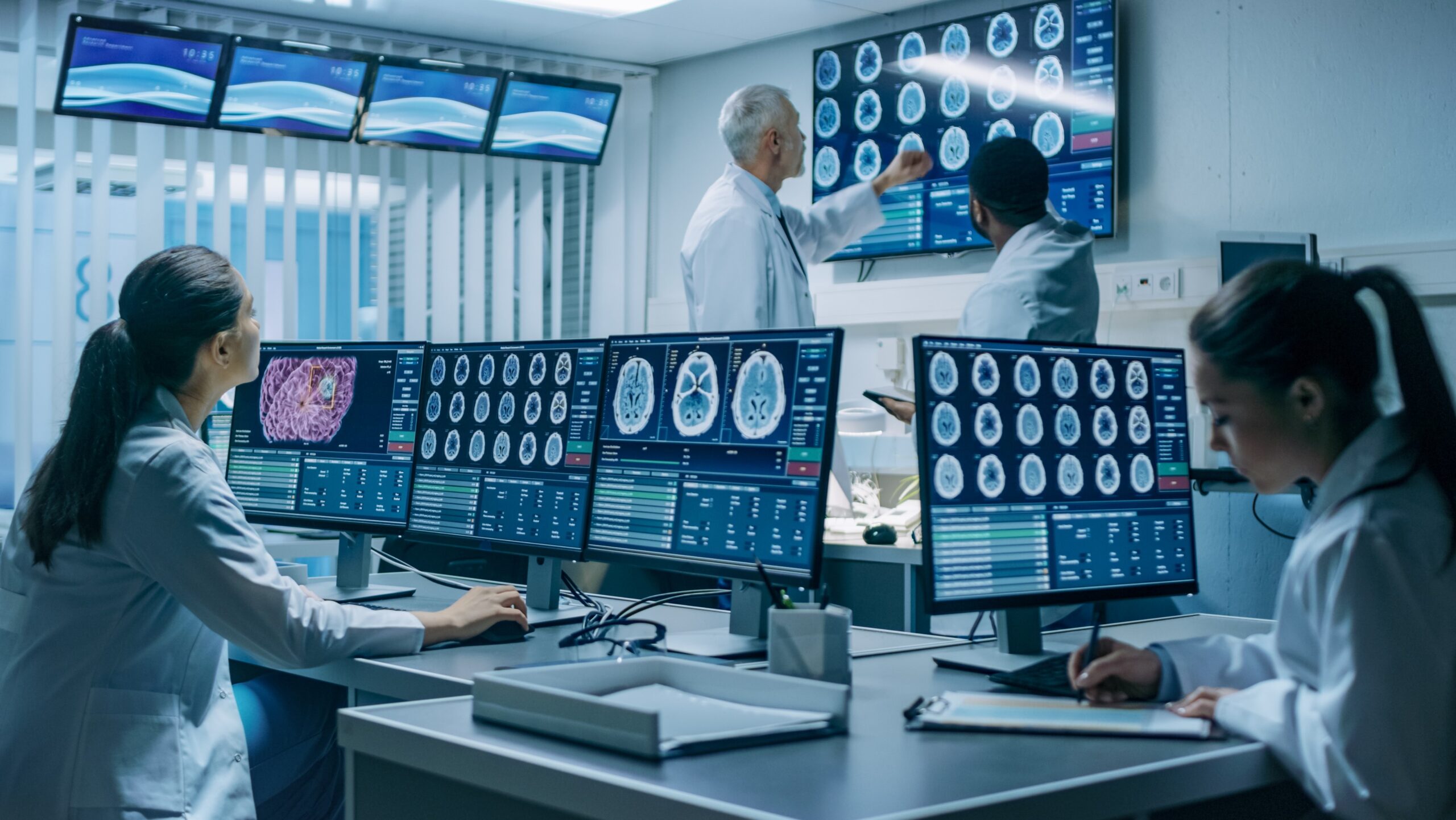

Importance of Advanced Imaging in Brain Cancer Therapy R&D
Glioblastoma (GBM) is the aggressive and most common form of brain cancer. The efficient treatment of GBM is still an unmet clinical need. The complex nature of the tumour itself requires not only more advanced therapies but also more advanced insights and methods to proof therapy efficacy.
Why is GBM therapy so difficult?
Many GBM treatment attempts have been unsuccessful. This is due to the highly complex nature of the tumour itself: the tumour micoenvironment is heterogeneous, composed out of different cells types. Certain treatments have the potential to kill certain cell types and leave others.
What is the development state for GBM therapies?
Much research is focused on GBM treatment development: Multimodal therapies (including radiation, chemo and surgery) as well as exciting novel approaches such as Immuno-Oncology therapies, are constantly being developed and tested.
Why is GBM clinical development so challenging?
Any successful GBM therapy must target the inherent tumour heterogeneity. This leads to individually complex structural responses in the tumour microenvironment. In addition, approaches such as Immuno-Oncology can cause an unconventional treatment effect: The tumour is expected to shrink but increases initially due to enhanced intrinsic metabolism (pseudoprogession).
What do we do wrong?
Conventional medical imaging methods such as computer tomography (CT) in combination with conventional scorings such as the Response Assessment in Neuro-Oncology Criteria (RANO) or other RECIST-like criteria are not adequate in all cases. First, anatomical imaging modalities are not able to show the complex tumour microenvironment and the therapy induced changes. Second, simple 2D line-based human assessments are not able to scientifically significant quantify the changes in a clinical experiment.
What does this mean for GBM drug development?
Even if the therapy would be successful from a functional point of view, the clinical trial would not be successful if the measurement (the trial endpoint) is not able to show the treatment efficacy.
What does this mean?
Clinical trial design is crucial. The applied method (imaging modality + analysis) to proof the efficacy of the therapy must: First, show the functional and anatomical structure of the tumour and second, measure changes quantitatively.
How do we do this?
Imaging Biomarkers derived from magnetic resonance imaging (MRI) and calculated using advanced algorithms offer a unique and powerful insight into the tumour microenvironment in vivo. Carefully designed they act as surrogate endpoints in clinical trials showing treatment related changes in greater detail. When used adequately in a multi-center clinical trial setting together with centralised reading imaging biomarker reflect scientifically therapy related changes and reduce human error.
What is the challenge of MRI in clinical trials?
In everyday clinical practice MRI can be thought of as a camera, looking inside the human body. When applying imaging in clinical research we need to consider the MRI as a measurement tool: The generated data needs to be comparable, repeatable and independent from human error. In multi-center clinical trials different MRI machines, settings, vendors, software and technicians are involved.
What does this mean?
Like the complex tumour structure in GBM requires advanced therapies and methods, the advanced methods in turn require careful therapy-based clinical trial design and expert trial conducting.
How do we leverage the power of MRI in GBM drug development?
We need to consider the complete pipeline: Starting from image protocol design and image acquisition over image post processing to analysis.
First, carefully tested, scientific and trial specific MRI protocols for different vendors must be developed and implemented at all sites to generate comparable data. Second, automated quality control to ensure the high data quality effectively is needed. Third, adequate image quantification using advanced computer-based image postprocessing is essential for sensitive and significant data. From an operational point of view centralised trial data management and reading is crucial to ensure reproducible and repeatable data.
References:
-
Röttger D, 2014. Reconstruction and Visualization of Neuronal Pathways with Applications in Neuroscience (Doctoral dissertation, Universität Koblenz-Landau).
-
Spampinato MV, Schiarelli C, Cianfoni A, et al. Correlation between Cerebral Blood Volume Measurements by Perfusion-Weighted Magnetic Resonance Imaging and Two-Year Progression-Free Survival in Gliomas. The neuroradiology journal. 2013;26(4):385-395.
-
Bisdas S, Smrdel U, Bajrovic FF, et al. Assessment of Progression-Free-Survival in Glioblastomas by Intratreatment Dynamic Contrast-Enhanced MRI. Clin Neuroradiol. 2016;26(1):39–45.
-
Ulyte A, Katsaros VK, Liouta E, et al. Prognostic value of preoperative dynamic contrast-enhanced MRI perfusion parameters for high-grade glioma patients. Neuroradiology. 2016;58(12):1197-1208.
-
Bisdas S, Braun C, Skardelly M, et al. Correlative assessment of tumor microcirculation using contrast-enhanced perfusion MRI and intravoxel incoherent motion diffusion-weighted MRI: is there a link between them?, NMR Biomed. 2014;2:1184-1191.
-
Coburger J, Merkel A, Scherer M, et al. Low-grade Glioma Surgery in Intraoperative Magnetic Resonance Imaging: Results of a Multicenter Retrospective Assessment of the German Study Group for Intraoperative Magnetic Resonance Imaging. Neurosurgery 2016; 78 (6): 775-786.
